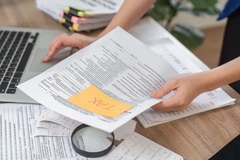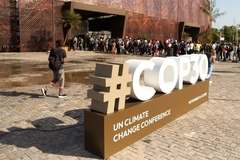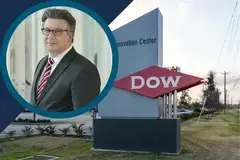COP30: GAIA demands reuse-driven EPR to cut methane and support waste workers
Key takeaways
- GAIA urges packaging and waste industry players at COP30 to redirect climate finance toward zero-waste systems.
- Zero-waste systems can support waste pickers and cut methane emissions by up to 95%, if implemented correctly, according to GAIA.
- The group warns that profit-driven infrastructure funding and waste-to-energy projects undermine just transitions, calling instead for reuse-focused packaging redesign.
At the UN Climate Change Conference of the Parties (COP30) which concluded on Friday in Belém, Brazil, the Global Alliance for Incinerator Alternatives (GAIA), campaigned for the packaging and waste sector to redirect finance toward zero-waste solutions to create jobs and support informal waste pickers, workers, and communities.
Packaging Insights sits down with Doun Moon, policy and research officer at GAIA, to discuss how packaging companies can support a “just transition” for waste workers whose livelihoods depend on the current linear waste economy.
“There are conversations on integrating waste workers and waste pickers into building reusable and refillable packaging systems. The key takeaway from a recent position paper by waste picker groups SWaCH and KKPKP is that we need to ensure their access to reusable materials, safety, fair compensation, and most importantly, their participation in decision making around planning and implementation.”
GAIA notes that the waste sector contributes nearly 20% of global methane emissions but receives less than 1.5% of climate finance. New research conducted by the network shows that, if implemented at scale, zero waste systems (including prevention, reuse, source separation, composting, and recycling) could cut methane emissions from solid waste by up to 95%.
Moon tells us that the network has put forward ideas on how COP30 can advance discussions on justice-oriented climate finance.
“We’ve noted several barriers, including the profit and Capex bias that favors infrastructure over essential public services, lack of direct access to funding as funds flow through national intermediaries.”
“There are also limitations in covering the operational costs of collection, composting, and waste-picker integration. Meanwhile, multilateral development banks promote false solutions such as waste-to-energy incineration.”
Zero waste leaders
GAIA’s newly published report on Community-Led Zero Waste Systems for Just Methane Mitigation examines the cases of Buenos Aires, Argentina; Quezon City, Philippines; and Accra, Ghana.
The document examines how decentralized, community-based waste management fosters environmentally conscious jobs, mitigates methane emissions, and enhances local governance.
 Doun Moon, policy and research officer at GAIA.“Our case studies highlighted the importance of building community-led waste management systems, through partnerships among the local government, waste workers, waste pickers, youth, and community members,” explains Moon.
Doun Moon, policy and research officer at GAIA.“Our case studies highlighted the importance of building community-led waste management systems, through partnerships among the local government, waste workers, waste pickers, youth, and community members,” explains Moon.
“For plastics, there aren’t easy ways to handle single-use plastic packaging waste without generating even greater pollution and GHG emissions.”
“Redesigning packaging for reuse rather than disposal would be the key, and packaging producers can be the leading changemakers for it.”
The position paper by the Indian waste picker groups SWaCH and KKPKP outlines how reuse systems can be made to be just and inclusive for waste workers:
• Waste pickers need to be registered and given the rights to handle reusables
• All materials should be accessible to waste pickers, including “high-end” packaging material
• Rates for redemption have to be fair and commensurate with labor
• Alternate materials should be safe and easy to handle
• Waste pickets should be involved in the discussions and all stages of the transition, and
represented in governance and oversight bodies.
EPR beyond “polluter pays”
Moon says GAIA offers “clear ideas” of how EPR schemes should be designed globally to hold producers accountable, as outlined in its EPR policy brief.
“EPR goes beyond ‘polluter pays,’ especially for plastic products and packaging,” she asserts.
“The focus has to be put on upstream measures such as redesign and shifting to reusable models instead of producing packaging for disposal. Simply having polluters pay for continued or even growing production and disposal won't make a dent in the current global plastic waste crisis.”
GAIA’s EPR recommendations call for a global, well-designed policy, guiding producers to:
 Redesigning packaging for reuse will be packagers’ key role in the post-COP30 transition, according to Moon.• Prioritize upstream solutions, phase out single-use materials, and redesign products, and
Redesigning packaging for reuse will be packagers’ key role in the post-COP30 transition, according to Moon.• Prioritize upstream solutions, phase out single-use materials, and redesign products, and
packaging for reduction and reuse
• Assume financial responsibility for all costs associated with material recovery, including
collection, transport, and processing costs
• Build on existing municipal waste management systems
• Include waste pickers in the design and implementation of the policies
• Ensure open and participatory planning and implementation processes for public input and fair representation of local organizations and small-scale businesses.
Moon adds: “Unfortunately, we haven’t seen functioning upstream-focused EPR models, let alone any EPR models proven to address plastic waste issues.”
Further discussing the role packaging manufacturers should play in financing zero waste systems beyond compliance with EPR laws, Moon says that during the negotiations for a UN Global Plastics Treaty earlier this year, “certain countries have put forward Plastics Tax as a core financing instrument.”
“Plastics tax, also referred to as Polymer Production Fee, is designed to be imposed on producers of primary polymers and is one of the most effective financial modalities that can drive design changes,” she says.
“We are hoping that the plastics tax will be part of the financial mechanism of treaty implementation going forward.”


















